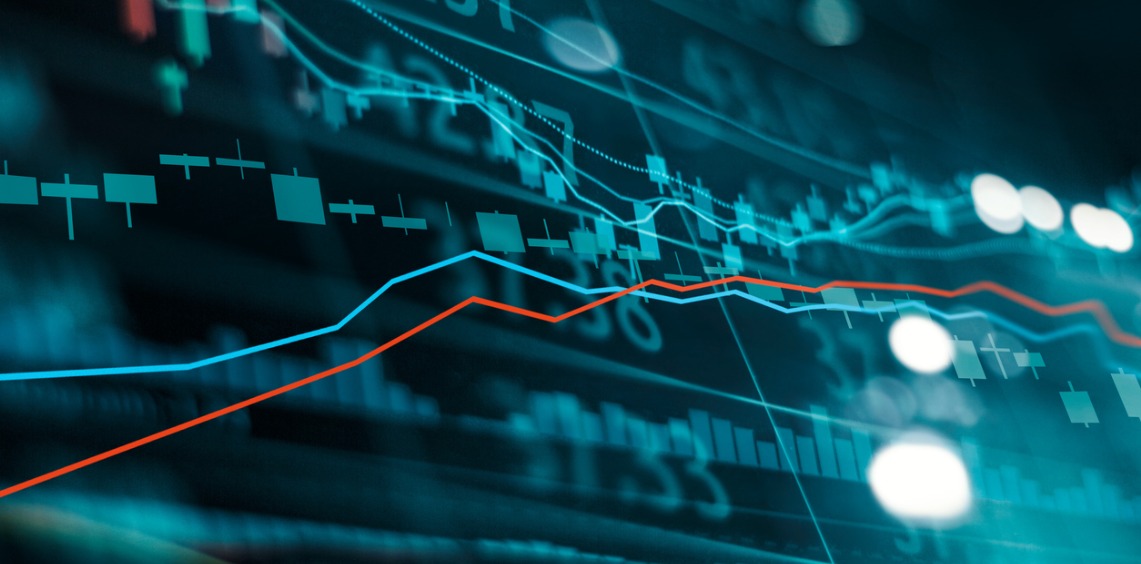Navigating Uncertain Markets with WisdomTree Managed Futures Fund



The WisdomTree Managed Futures Strategy Fund (WTMF) has been the best-performing managed futures ETF year-to-date, delivering 10.5% returns as of June 30, 2023. This is in contrast to the weak and negative performance of the majority of the funds in the category. We’ll explore some reasons WTMF has successfully delivered consistent returns compared with the S&P 60/U.S. Agg 40 benchmark.

For the most recent month-end performance, click here. For the most recent month-end and standardized performance and to download the fund prospectus, click the respective ticker: WTMF, FMF, CTA, FAAR, DBMF.
WTMF consists of five independent, trend-following models on rates, currencies, crypto, equities and commodities. The asset allocation seeks to provide consistent positive returns with low volatility.
Our tactical equity model is a data-driven, systematic strategy that invests in a diversified basket of five broad equity index futures contracts (S&P 500, Nikkei 225, S&P/TSX 60, Euro Stoxx 50 and Russell 2000). The combined weight of this equal-weighted equity component of the model is limited to 40% of the exposure in the strategy.
A general macro indicator based on the VIX and high-yield credit spread is used to rotate between a long-only (risk-on) and long/short (risk-off) strategy. The model also uses contract-specific signals based on momentum and correlation (a sign of stress in the market) to reduce exposure or go short.
Any excess collateral available after reducing equity exposure in the model from the 40% target weight is allocated to either the short end or long end of the Treasury futures contracts as additional diversification.
The enhanced commodity model, which makes up 37% of the portfolio, takes a long, flat or short position in individual commodity contracts based on two-factor momentum. When both signals agree, we take either a long or a short position in the contract. If the two signals differ, there is less certainty about whether there is a reliable trend to trade on, hence scaling our positions in commodities where the signals are conclusive.
Our currencies model, which makes up 10% of the portfolio, invests in either the U.S. dollar or a bucket of EM currencies based on the momentum of the ICE U.S. Dollar Index.
The Treasuries model consists of multiple trend signals on 10-Year and 30-Year Treasury based on which a fully long/short or a partial long/short position is determined in the two contracts individually. The allocation makes up 10% of the overall portfolio.
Finally, a two-factor momentum model determines the allocation in the BTC contract, resulting in a full 3% allocation, 1.5% allocation or no allocation.
Short-Term Performance
While we witnessed positive returns for all components except rates, commodities and equities have been the major contributors by far this year. Our tactical equity rotation model, which remained around 80% invested in equities on average throughout the year, added 3.5% to the total returns.

On the other hand, our enhanced commodity model has successfully navigated the volatile sector shifts in commodities this year. Short positions across mean reverting natural gas and oil, among other commodities, helped generate gains from the sharp price decline this year.

The breakdown below shows that the performance was equally driven by the long and short components of the models this year, highlighting the model’s capability to generate returns from both rising and falling markets.

Long-Term Performance (since Model Revamp)
Over the last two years, we have witnessed increased global market volatility, primarily driven by Russia’s invasion of Ukraine. We would like to note that WTMF navigated the volatility relatively well, generating positive returns over the benchmark, with an annualized volatility of just 5.96% compared with the benchmark’s 11.58% during the period.

Our asset allocation framework and low correlation among underlying models helped achieve reduced portfolio risk, increased stability during market turbulence and the potential for enhanced risk-adjusted returns.
WTMF vs. Benchmark Volatility and Component Contribution

Conclusion
With heightened geopolitical tensions, unusually high rates and a changing world trade order, market uncertainty will likely remain high for the foreseeable future. WMTF has proven resilient in controlling drawdowns and providing consistent returns with significantly reduced volatility over the S&P 60/U.S. Agg 40. Therefore, it could be worth looking at as a core or tactical allocation.
Important Risks Related to this Article
There are risks associated with investing, including the possible loss of principal. Funds focusing their investments on certain sectors may be more vulnerable to any single economic or regulatory development. This may result in greater share price volatility. Dividends are not guaranteed, and a company currently paying dividends may cease paying dividends at any time. Please read the Fund’s prospectus for specific details regarding the Fund’s risk profile.
The purpose of this material is to provide financial professionals with a means to evaluate the investment methodology of the Funds and Indexes as compared to various other funds/indexes. It is the opinion of WisdomTree that all funds and indexes are managed differently and do not react the same to economic or market events. The investment objectives, strategies, policies or restrictions of other funds may differ, and more information can be found in their respective prospectuses. Therefore, we generally do not believe it is possible to make direct fund-to-fund comparisons in an effort to highlight the benefits of a fund versus another similarly managed fund. The information included in this material is based upon data obtained from FactSet and WisdomTree’s database, which are believed to be accurate. This material is not considered an offer to sell or a solicitation to buy shares of any other funds mentioned herein.

Ayush is a Global Associate Director in WisdomTree's research and index teams, where he focuses on developing innovative quantitative strategies across asset classes and supporting WisdomTree's diverse range of products. He specialises in factor exploration, portfolio construction and optimisation, and risk management.
Ayush has over 7 years of experience in the financial services industry. Prior to joining WisdomTree, Ayush worked in investment research teams at J.P. Morgan and Franklin Templeton where he was responsible for developing and managing equity/fixed income smart beta products, as well as cross-asset risk premia products for global institutional and retail clients. His experience spans across a range of asset classes and investment styles.
Ayush holds a Bachelor's and a Master's degree in Engineering Physics from the Indian Institute of Technology, Bombay.

Alejandro Saltiel joined WisdomTree in May 2017 as part of the Quantitative Research team. Alejandro oversees the firm’s Equity indexes and actively managed ETFs. He is also involved in the design and analysis of new and existing strategies. Alejandro leads the quantitative analysis efforts across equities and alternatives and contributes to the firm’s website tools and model portfolio infrastructure. Prior to joining WisdomTree, Alejandro worked at HSBC Asset Management’s Mexico City office as Portfolio Manager for multi-asset mutual funds. Alejandro received his Master’s in Financial Engineering degree from Columbia University in 2017 and a Bachelor’s in Engineering degree from the Instituto Tecnológico Autónomo de México (ITAM) in 2010. He is a holder of the Chartered Financial Analyst designation.

